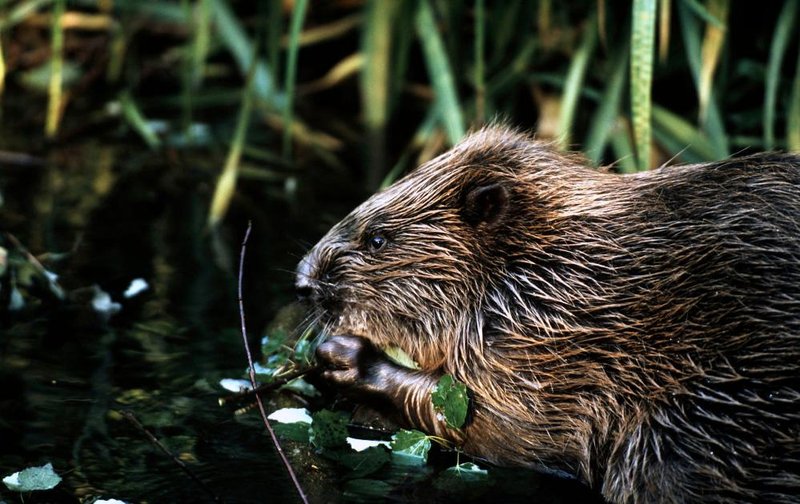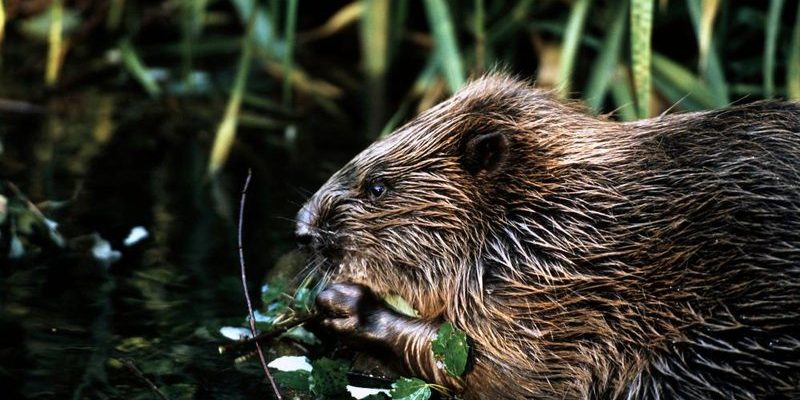
Here’s the thing—beavers are often misunderstood. They might seem like simple animals, but there’s so much more to them than meets the eye. From their unique adaptations to their vital role in maintaining biodiversity, beavers are some of nature’s true marvels. So, if you’re curious to learn more about these fascinating creatures, grab a comfy seat, maybe a coffee, and let’s dive into the top 10 facts about the beaver.
1. Beavers Are Nature’s Engineers
Beavers have an impressive knack for construction, which is why they’re often referred to as nature’s engineers. They build dams using branches, mud, and rocks. You might be wondering, “Why do they do this?” Well, their dams create ponds that serve as safe havens for them to raise their young and protect themselves from predators.
Imagine a busy construction site where every worker knows their job. Beavers work together in family units, using their powerful front teeth to gnaw on trees and gather materials. Once they have enough, they meticulously position each piece, much like how we would align bricks when building a wall. The result is a sturdy dam that can hold back water and create a larger, safer habitat.
What’s even more amazing is that these constructions don’t just benefit beavers. The ponds they create provide habitats for many other species. Birds, amphibians, and even fish thrive in these wetland ecosystems. It’s like throwing a party and inviting the entire neighborhood!
2. They Have a Unique Diet
Beavers are strictly herbivores, focusing on a diet that mainly includes tree bark, leaves, and aquatic plants. You could say they’re nature’s lawnmowers, constantly grazing on vegetation along rivers and streams. What’s interesting is that their teeth are specially adapted for this kind of diet.
Their front teeth, called incisors, are large and chisel-shaped, allowing them to gnaw through tough wood easily. As they chew, the teeth keep growing, which is handy since beavers wear them down continuously. It’s like having an ongoing dental maintenance plan, without needing to visit the dentist!
When the winter months roll around, beavers prepare by storing food in their ponds. They’ll clip branches and submerge them underwater, creating a pantry for those snowy days when foraging isn’t as easy. It’s a smart way to ensure they have something to eat, similar to how we might stock up on groceries before a snowstorm.
3. Their Fur Is Specially Adapted
Beavers have a rich, waterproof coat that protects them in their watery habitats. This fur isn’t just for show; it’s highly specialized. The outer fur is long and coarse, while the underfur is soft and dense. This combination keeps beavers warm in cold water and dry on land.
You might find it fascinating that beavers have a unique way of maintaining their fur. They use their paws to coat their fur with castor oil, which they produce from glands near their tails. This oil not only provides waterproofing but also helps in keeping their fur insulated. It’s like applying sunscreen before a day in the sun—vital for their survival!
Moreover, the fur’s ability to repel water aids beavers in swimming efficiently. They can stay submerged for up to 15 minutes, making them adept at avoiding predators. It’s remarkable how their bodies are designed to thrive in their specific environments.
4. They Have a Strong Sense of Family
Beavers are incredibly social creatures. They live in family units called colonies, which typically consist of a breeding pair and their young. These family bonds are essential for their survival, as younger beavers learn vital skills from their parents.
Just like how we might rely on family to teach us important life lessons, young beavers watch their parents build dams and gather food. They stay with their families for about two years before venturing out. This time spent together helps ensure that the next generation is well-prepared for life on their own.
What’s touching about beaver families is their cooperation. They work together when building their lodges and dams, showcasing teamwork. It’s a reminder that in nature, as in life, working together makes everything a little easier—and a lot more fun!
5. Beavers Are Great Swimmers
You’d be surprised to learn just how adept beavers are in the water! Their powerful tails act like rudders, helping them steer while swimming. This tail is not just for balance; it’s also a tool for communication. When threatened, beavers can slap their tails on the water to warn others in the vicinity.
In addition to their tails, beavers have webbed feet that aid in swimming. These adaptations allow them to glide swiftly through the water while keeping a low profile to avoid predators. Honestly, watching a beaver swim is like observing a well-oiled machine in motion. They can dive deep and hold their breath for several minutes, making them agile hunters of underwater vegetation.
Their swimming abilities also enable them to cover large distances when searching for new habitats or food sources. When they need to explore, they can travel up to several miles, showcasing their resilience and adaptability. It’s like taking a leisurely swim at your favorite beach—only their beach is a river or pond!
6. Beavers Play a Crucial Role in Ecosystems
Beavers are often called keystone species, meaning their presence significantly impacts the environment. By building dams, they create wetlands that benefit countless plants and animals. These areas help filter water and mitigate flooding, which can be a game-changer for ecosystems.
When beavers construct dams, they can raise the water table in an area. This leads to the growth of diverse plant life, which in turn attracts many birds, insects, and other animals. It’s like planting a garden, where each plant supports and nurtures others, creating a vibrant ecosystem.
Moreover, the wetlands created by beavers help in reducing erosion. By slowing down water flow, they prevent soil from washing away. So, they’re not just building homes for themselves; they’re also nurturing the land around them.
7. Beavers Are Remarkably Adaptable
One of the most fascinating traits of beavers is their adaptability. They thrive in various environments, from rivers and lakes to marshes and even urban areas. This ability to adapt helps them survive and flourish in changing conditions.
When it comes to choosing where to build their homes, beavers are flexible. If one area becomes unsuitable due to pollution, they’ll seek out new locations. This resilience is crucial for their survival, especially as environmental changes and habitat destruction occur.
In urban areas, you might even spot beavers taking up residence in parks or ponds. They manage to coexist alongside human developments, showcasing their remarkable ability to adapt. It makes you appreciate how life can find a way, doesn’t it?
8. They Communicate in Unique Ways
Beavers have a variety of ways to communicate. They are vocal animals, using sounds like grunts, whines, and even growls to express themselves. But sounds aren’t their only form of communication; they also use scent marking.
Beavers produce a substance called castoreum, which is secreted from their glands. They use this to mark territory, letting other beavers know where they stand. It’s like putting up a “Do Not Disturb” sign! Scent marking helps avoid conflicts with other beavers and keeps their family safe.
Additionally, their body language conveys messages too. When a beaver feels threatened, it may slap its tail to warn others. That quick motion sends a signal through the water, alerting fellow beavers to take cover. It’s fascinating how these little creatures have developed such a complex communication system.
9. Beavers Have a Short Lifespan
While beavers are remarkable animals, their lifespan is surprisingly short. In the wild, they typically live about 10 to 12 years, although some can reach 20 years in captivity. Many factors contribute to their shorter lives, such as predation and habitat loss.
Despite their brief lives, beavers make significant contributions during their time on earth. They build and maintain habitats that sustain countless species long after they’re gone. It’s a testament to how much impact one creature can have, even in a limited timeframe.
It’s worth noting that their mortality rate is higher in urban settings, where they face threats like traffic and pollution. This environmental challenge underscores the importance of protecting their natural habitats.
10. Beavers Are Making a Comeback
Once nearly driven to extinction due to overhunting for their fur and castoreum, beavers are making a remarkable comeback in many regions. Conservation efforts and changes in hunting regulations have allowed beaver populations to rebound.
In some areas, beavers are being reintroduced to promote ecological restoration. Their natural behaviors help replenish ecosystems that have been degraded, proving that sometimes, nature knows best.
You might see signs of their return in areas previously devoid of these fascinating creatures. The presence of beavers can indicate a healthier environment, as they help restore balance in local ecosystems. It’s like watching a team come together and make a difference!
In the end, beavers are not just adorable animals; they are essential players in maintaining our ecosystems. Their ability to transform landscapes, create habitats, and enhance biodiversity is something worth celebrating. So, next time you see a beaver, take a moment to appreciate the amazing role they play in our world!

